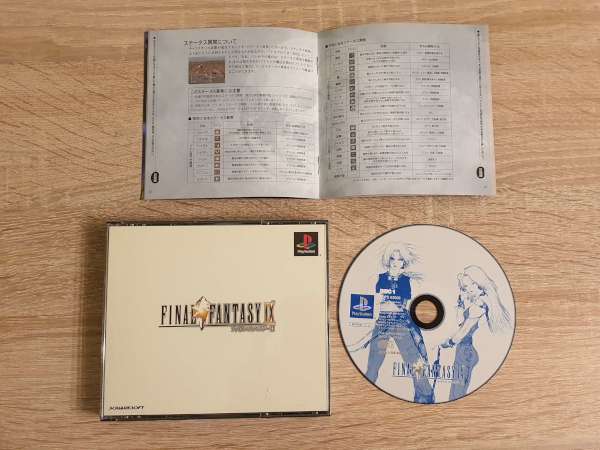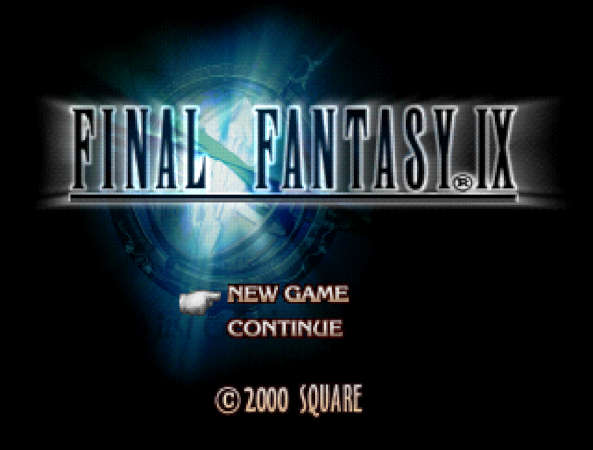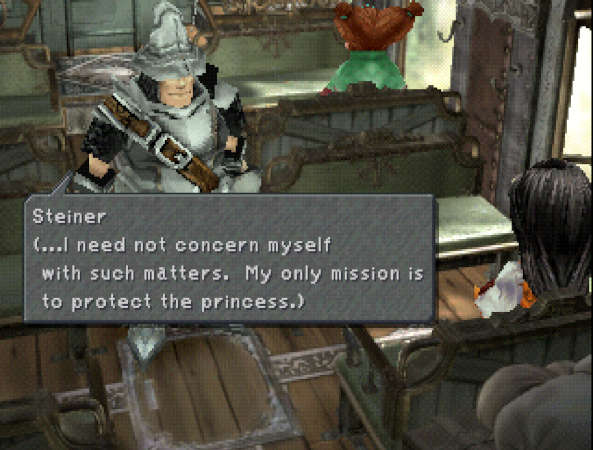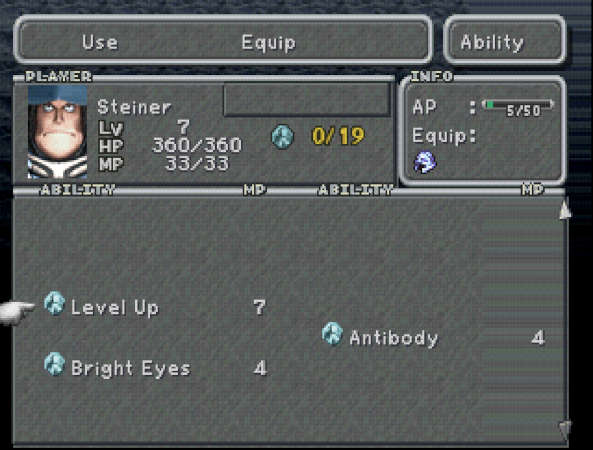Playing Final Fantasy IX for the first time in 2022
My gaming in 2022 wad dominated by two franchises: Final Fantasy and Metroid. I re-played Super Metroid and Final Fantasy VI on original hardware, finished Metroid Dread and Final Fantasy VII Remake, both latest entries in the series. Finally, I managed to beat Samues: Metroid Returns, Metroid Prime 2 and Final Fantasy IX. Today I want to talk about Final Fantasy IX, while it remains fresh in my mind, leaving other mentioned games for possible retrospective posts sometime in the future. I have had FFIX on my bucket list for a couple of years now. I made one attempt at playing it around three years ago, but stalled about four hours into the game. Four weeks ago I made a completely spontaneous decision to play FFIX and this time the playthrough went smoothly right to the end.
Final Fantasy IX is sometimes described as a “love letter to earlier entries in the series” and a “return to the roots”. Indeed, after three earlier instalments being placed in worlds that were more and more gravitating towards sci-fi setting, this entry returns to fantasy roots seen in first five parts of Final Fantasy. Of course when I say “fantasy” I mean “fantasy with airships”. It wouldn’t be Final Fantasy otherwise!
Final Fantasy IX has interesting story and great character writing. It was Final Fantasy VII that became famous for their characters (few gamers haven’t heard about Cloud or Aerith), but FFIX is equally good. Characters have their own unique personalities and motivations, with my personal favourite being Vivi. One notable exception to quality of character writing is Amarant. He has no backstory, no purpose, no motivation behind his actions, and almost no personality. Many of the game’s NPCs are written in more detail than him. Amarant only serves as a pretext to have some lines about importance of working with others. Overall he feels like an afterthought and the game would probably be better without him. I also have a minor nitpick about Eiko. While she’s a great character, according to the game story she’s only six years old. Except that her words and actions certainly don’t fit a child. In particular her initial fixation on having a romantic relationship with Zidane is weird, to say the least.
When it comes to character progression system, each character has an assigned class. Those classes will be familiar to FF veterans (Black Mage, White Mage, Thief, etc.), but in FFIX these classes come with a twist as each character now has access to two types of class-specific commands. And so for example Zidane, Freya, and Amarant have their typical class-based commands (Steal for thief Zidane, Jump for dragon knight Freya and Throw for ninja Amarant) but each of them also has access to unique spells only they can use in battle. Similarly white mages Dagger and Eiko are now also Summoners, each of them having a different set of summoning spells, while black mage Vivi can Focus to make his spell in the next turn more powerful. Each character can also learn static abilities that can be equipped from the menu between battles:
All abilities - both class-specific spells as well as static abilities - are learned from equipment items (weapons, armours, accessories, etc.), similarly to how magic was learned from Espers in Final Fantasy VI. And similarly to magic system from FFVI I often found myself changing the equipment after every single battle because one of the characters learned a new ability and I wanted to equip them with something different so that they begin learning a new ability. There were moments when this became a bit tedious but overall it wasn’t a big deal. Overall the ability system is fairly simple and doesn’t really offer any freedom when it comes to character builds.
When it comes to battles, Final Fantasy IX uses a classic turn based ATB (Active Time Battle) system, where characters wait until their action gauge fills up (how fast this happens depends on character’s speed) and once it does they can execute their action. The “Active” part of ATB means that enemies are allowed to attack while the player is selecting actions from the menu, putting some extra pressure on the player to act fast. This however always remained optional and when playing Final Fantasies I have always disabled the “active” part of ATB, allowing me to pick actions on my turn without rush.
Unfortunately, I don’t have anything good to say about implementation of ATB in Final Fantasy IX. Earlier entries in the series got the ATB system right but for some reason FFIX gets it wrong. In FFIX enemies seem to be largely unaffected by ATB turn order. They perform actions at arbitrary moments, often attacking several times in a row or in between series of attacks that one would think should not be interruptible, e.g. character casting two spells as part of Trance. (More on Trance below.) This completely destroys flow of battle and derails decision making process in player’s head. In the time between the decision to execute a particular action to the time of actually executing that decision situation on the battlefield can change completely. This is further exacerbated by various time-based effects, such as poison or regen, that work in real-time rather than working in turn-time. This completely breaks balance of poison an regen, among other things. For example, your character gets poisoned and you use Antidote on them immediately. Oh, but some time earlier you also decided to cast Bahamut, a powerful summon spell with lengthy animation, and it gets cast now. Well, bad luck. Poisoned character will likely die because their life drops every few seconds during summon animation. Conversely, Regen status has become extremely overpowered. Especially with Auto-Regen ability characters are able to recover most of their HP during spell animations, making end-game significantly easier than it probably should be. And lastly, pre-emptive strikes are also broken. During a pre-emptive strike your party attacks enemy from behind - this happens randomly once in a while - and all of your party members should be able to execute their attacks before enemies’ ATB timer even starts ticking. Again, this is not the case in Final Fantasy IX. During a pre-emptive strike it is not uncommon to have enemy attack right after your first attack and before the rest of your team gets a chance to attack, thus completely missing the point of a pre-emptive strike.
And then there’s questionable Trance mechanic to top it all. Trance is like Limit Break in Final Fantasy VII or Overdrive in Final Fantasy X. As character gets attacked a special gauge fills up and once the gauge is full character gets access to a powerful special move. Trance is a bit different in that, rather than being a single move, it lasts for several turns and for its duration allows to execute special moves. For example Vivi can cast two spells on his turn while Dagger’s summoning spells become more powerful. This is all fine. The real problem with Trance is that it activates automatically when the Trance gauge is full. The player has therefore absolutely no control over Trance activation. As a result Trances get activated at completely random times, for example during irrelevant world map battle, or right before a boss fight, or right at the end of a fight giving character no chance to make any use of Trance. As a result player has not strategic control over Trance and the whole mechanic becomes a completely random bonus that only works occasionally. This is in stark contrast with Limit Breaks in Final Fantasy VII, where charging them up was one of techniques to help with boss fights.
Another aspect of the game that I also found slightly disappointing is the music. As usually it was composed by Nobuo Uematsu but, compared to his other works, music in FFIX feels very average. There are memorable themes once in a while - Freya’s theme is a masterpiece! - but the music tracks player gets to hear most often - battle theme, boss theme, world map theme - are meh. Apparently some music tracks are adaptations of themes from Final Fantasies I, II, and III, but I haven’t played those entries yet and only realized this from reading the internet.
As with other Final Fantasy games, this one also has a lot of sidequests. I have to admit I spectacularly missed some of them, including all Chocobo quests. I also completely ignored the existence of Tetra Master mini card game, which I found quite confusing and didn’t bother to search for rule explanation online. Despite that the game took me 47 hours start to finish, which is more than it took me to beat Final Fantasy VII when I replayed it four years ago. I played most of Final Fantasy IX by emulating on Recalbox with RGB Dual. As outlined in my earlier post I’ve run into performance problems, especially on the world map. I won’t hide this hindered my experience and was one of the reasons I wasn’t keen on exploring the world if I didn’t have to. For the last quarter of the game I transferred the save file to my PS Vita, which required using online save converter since the memory card format is different on the Vita, and played while on a Christmas holiday trip. I gotta say this was a pretty fun thing to do. I love how emulation and modding allow to achieve things not possible with original hardware.
Well, that was quite a bit of complaining on my side. But do I regret playing? Absolutely not! The story, characters, and the presented world make up for all the shortcomings of battle system and unexceptional skill system. This is definitely a good entry in the series and I am very happy to have finally played it. I regret that I was unable to play FFIX 20 years ago when it came out. But even playing it now was an unforgettable experience.



